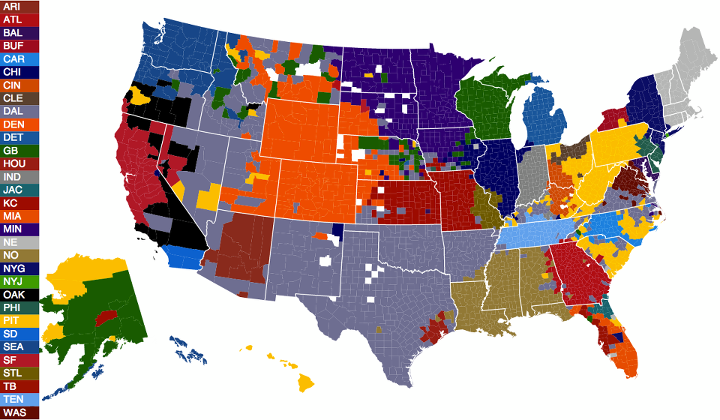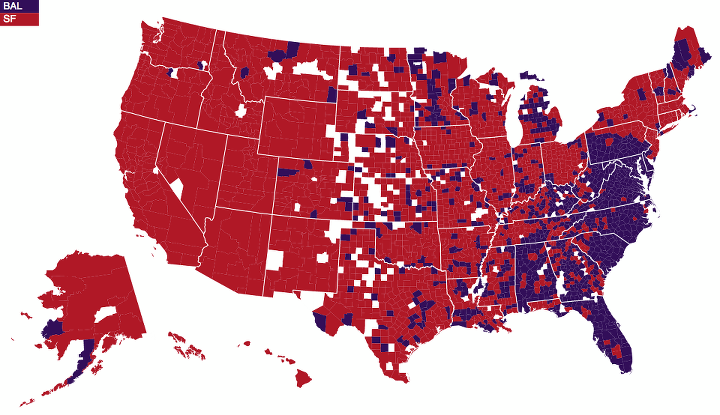Facebook Data Shows Which Super Bowl Team Wins on Popularity
Thirty-five million U.S. Facebook users have “liked” the page of at least one of the NFL’s 32 teams. Combine that with location data and you’ve got, as Facebook says, “one of the most comprehensive samples of sports fanship ever collected.”
Facebook used the data to determine which team was the most popular in every county in the country. Here’s how it looks, mapped:

Unsurprisingly, most counties devoted to given team are concentrated in that team’s region of the country. The fanbases of few teams, though, are apparently not as bound by geography. The Dallas Cowboys are often referred to “America’s team,” and the data do indicate that the team’s fanbase covers an impressively large area of the country, stretching from Virginia to California, and pro-Cowboy counties appear in nearly every region. The Pittsburgh Steelers fan footprint is also fairly large and dispersed. Tim Tebow’s New York Jets, meanwhile, are the most popular team in only one county on Long Island.
Facebook went further in its analysis, removing teams from the mix as they were eliminated from Super Bowl contention, either when they failed to make the playoffs or lost a playoff game. You can check out each of the resulting maps here.
So who wins the Facebook likes-per-county Super Bowl? The San Franscisco 49ers defeat the Baltimore Ravens in a landslide:

Keep Reading
Most Popular
Large language models can do jaw-dropping things. But nobody knows exactly why.
And that's a problem. Figuring it out is one of the biggest scientific puzzles of our time and a crucial step towards controlling more powerful future models.
How scientists traced a mysterious covid case back to six toilets
When wastewater surveillance turns into a hunt for a single infected individual, the ethics get tricky.
The problem with plug-in hybrids? Their drivers.
Plug-in hybrids are often sold as a transition to EVs, but new data from Europe shows we’re still underestimating the emissions they produce.
Stay connected
Get the latest updates from
MIT Technology Review
Discover special offers, top stories, upcoming events, and more.